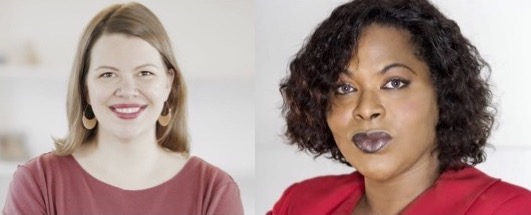Several medical students from the Bronx or those who attend medical school in the borough were recently recognized with scholarships geared toward bringing diversity to the medical profession.
The $42,000 scholarship helps to address the financial barriers that medical students from underrepresented backgrounds face. The scholarship is available to medical students from backgrounds underrepresented in medicine (URIM), who commit to working in an underserved area in New York state upon completion of their education. In 2017, AMSNY launched a scholarship program funded by the state Legislature. The scholarship covered the cost of tuition for 10 students. This past year, funding from the Cabrini Foundation allowed AMSNY to expand the scholarship program by 10 students.
URIM is defined as students who identify as any of four ethnic/racial categories, either as single or multi-ethnic/racial: American Indian/Alaska Native, Black/African American, Hispanic/Latino and Native Hawaiian/Other Pacific Islander. Those groups make up approximately 31.1% of New York’s population, but only 12.1% of the state’s physician workforce.
In October 2021, the Associated Medical Schools of New York (AMSNY), a nonprofit organization that represents the 17 medical schools in New York state, released its Medical School Enrollment Report for 2020-2021 and the number of first-year students who are defined as URIM increased by almost two percent, reaching 21.1%. This is the first time since these statistics have been tracked for more than two decades that the percentage has exceeded a 205 threshold.
“AMSNY congratulates this year’s Diversity in Medicine Scholarship recipients, each of whom is passionate about medicine and improving health disparities in underserved communities,” said Jo Wiederhorn, CEO and president of AMSNY. “Through this program, we’re able to reduce barriers to a medical education for students from backgrounds underrepresented in medicine, helping to diversify New York’s physician workforce and reduce health disparities.”
The eight students from the Bronx or attending medical school in the borough are: Emelio Woodstock of the Bronx attends SUNY Stony Brook University; Obioesio Bassey attends Albert Einstein College of Medicine in the Bronx and grew up in Georgia; Bronx native Danya Contreras attends Upstate University; Jerlin Garo of the Bronx attends Einstein College; Nneka Onwumere is from the Bronx and attends Upstate University, Luna Paredes is from the Bronx and attends Einstein College; Jose Deliz of the Bronx attends State University of New York, Downstate Health Sciences University and Robert Simmons is from the Bronx and attends SUNY Stony Brook.
“Twenty percent is worth celebrating, as long as we acknowledge that we have a way to go,” Wiederhorn said. “Diversity in medicine is important because we know patients have better health outcomes when they see doctors from their own backgrounds.”
According to the AMSNY report, 11,193 students were enrolled in New York state-based medical schools in the 2020-2021 school year. First-year students numbered 2,589, of which 21.1% identified as URIM.
Additionally, a report, “Addressing the Challenges to a Diverse Physician Workforce,” published by AMSNY in 2020, revealed that the application process to get into medical school is another barrier that stops many URIM students. Medical school applicants are recommended to budget $5,000 to $15,000 for the application process alone. And those who are able to apply and are accepted can expect to graduate with $250,000 or more in student loans.
“This lack of representation has implications for medical care,” Wiederhorn said. “Physicians from underrepresented minority groups are more likely to practice primary care and practice in low-income and underserved areas. The COVID-19 pandemic has underscored the dire need to address health disparities.”
Bassey, a first-generation Nigerian American, grew up watching his parents struggle to provide the necessary care for his younger brother — diagnosed with autism at an early age. His brother’s condition, and his parents’ commitment to advocate for his brother, inspired his interest in medicine.
In college, Bassey pursued psychology as his major to better understand mental disorders. Motivated by disparities in health care outcomes of minority patients, he obtained a master’s in Public Health from Georgia State University. Now in his fourth year at Albert Einstein College of Medicine, Bassey looks forward to serving medically underserved communities. As a future physician, he emphasizes the importance of building trust between health care providers and the communities they serve. He plans to increase health literacy for underserved communities and implement interventions that address disparities in health care access and quality of care.
Bassey, 28, applied to colleges throughout the East Coast, but felt a connection to the Bronx because his parents lived there when they were younger. Since relocating to the Boogie Down, he has felt at home.
‘Overall, I really have enjoyed the Bronx,” he said. “Compared to Georgia, I definitely like it more here. It’s been a great experience. I’ve learned a lot about myself.”
Bassey, who will graduate in 2023, said having the financial support of AMSNY played a big role in his success at medical school. Students are often overburdened with loans and AMSNY gave him a bit less to worry about, he said.
He said that during the COVID-19 pandemic, staff from AMSNY were constantly checking in to see how everything was going.
“Taking away that financial pressure helps a lot of people make decisions that are not just based on money,” he said.
Bassey lauded ASMNY for its program because many people come from communities where they have never met Black doctors. He encourages more people of color to apply for the scholarship and said when he meets with younger medical students of color they often feel more “open” to talk with him.
Looking to the future, he plans to remain in the Bronx and work in psychiatry.
“They want to increase the diversity and give you a chance,” he said about the program. “They won’t overlook you because you are Black.”
Gov. Kathy Hochul and the state Legislature also recently gave the Diversity in Medicine post-baccalaureate programs a huge vote of confidence. In the 2023 budget, funding for AMSNY’s Diversity in Medicine programs was doubled to a total of $2.4 million. In addition, the Legislature added in $800,000 for the scholarship programs — an increase of $250,000, which would cover four additional spots.
During the 2022-2023 academic year 30 medical students from underrepresented backgrounds will be awarded tuition scholarships to offset the financial barriers to a medical school education.
Reach Jason Cohen at jcohen@schnepsmedia.com or (718) 260-4598. For more coverage, follow us on Twitter, Facebook and Instagram @bronxtimes





















